The Uzi is one of the most recognized firearms in the world. It ranks right up there with the AK-47, AR-15, and the Glock for iconic status.
It’s so famous that numerous submachine guns are incorrectly referred to as Uzis, regardless of their actual designation — It’s the Kleenex of submachine guns.
Between the 1960s and 1980s, the Uzi submachine gun was the top-selling SMG in military and law enforcement markets. The Uzi brought in over 2 billion dollars in revenue for IMI, and they’ve sold the gun to over 90 countries.
It’s kind of a big deal.
Table of Contents
Loading…
What is an Uzi?
The Uzi is an Israeli-designed and manufactured selective-fire submachine gun. It utilizes an open bolt and direct blowback system.
Although the 9mm chambering was the most popular, Israel produced the Uzi in 9×21 IMI, .45 ACP, and even the ill-fated .41 AE.
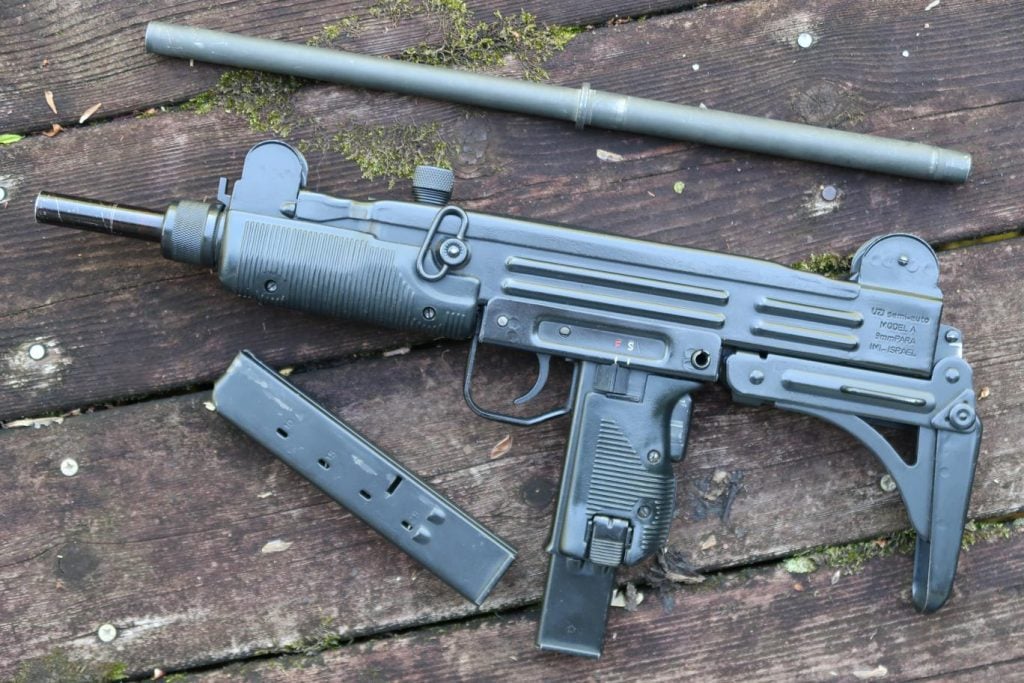
The standard Uzi weighs 7.72 pounds with a 10.2-inch barrel and an overall length of 25 inches with the stock extended. The rate of fire is a relatively slow 600 rounds per minute.
Although the design doesn’t seem fancy, the system utilized a telescoping bolt, which was uncommon for the time. The telescoping bolt provided enough room to allow the magazine to sit in the pistol grip.
The benefits of this design are numerous. First, it allowed for a shorter overall length. Second, it’s said to improve the soldier’s ability to reload. The old “one hand finds the other” reload, much like a standard pistol.
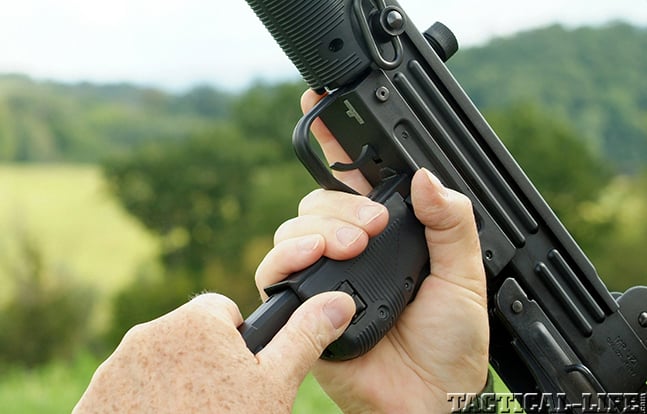
Additionally, a telescoping bolt and magazine location provided a slower, more controllable rate of fire that made for a better-balanced weapon. This is apparent when you try and fire the gun one-handed compared to something like the MP5.
Israelis take gun safety to an entirely different level than most (empty chamber carry anyone?), and the Uzi is no exception. It features a manual safety, a fire selector, as well as a grip safety.
Being an open bolt firearm, the extra grip safety was put in place in case the weapon was dropped, as open bolt guns are notoriously easy to accidentally discharge.
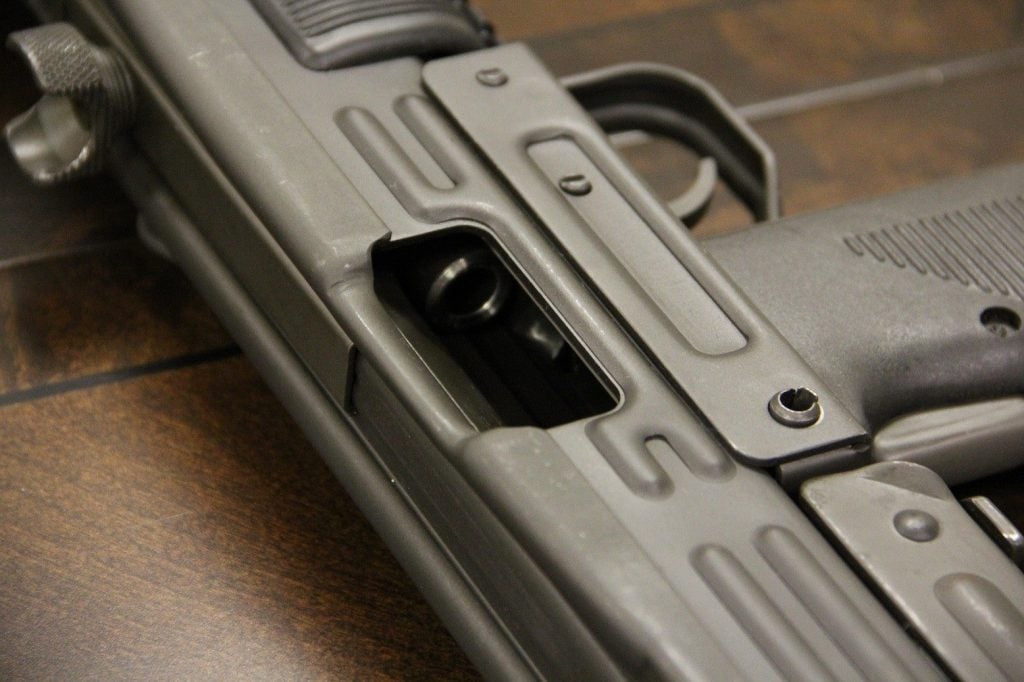
The magazine release sits on the bottom of the pistol grip, much like the classic European heel releases. However, as an SMG, this isn’t a huge ergonomic issue.
A charging handle sits on top of the gun and is a nonreciprocating design. Oh, did I mention it has a bayonet lug?
A History of Success
The story of the Uzi starts with its inventor, Uziel Gal.
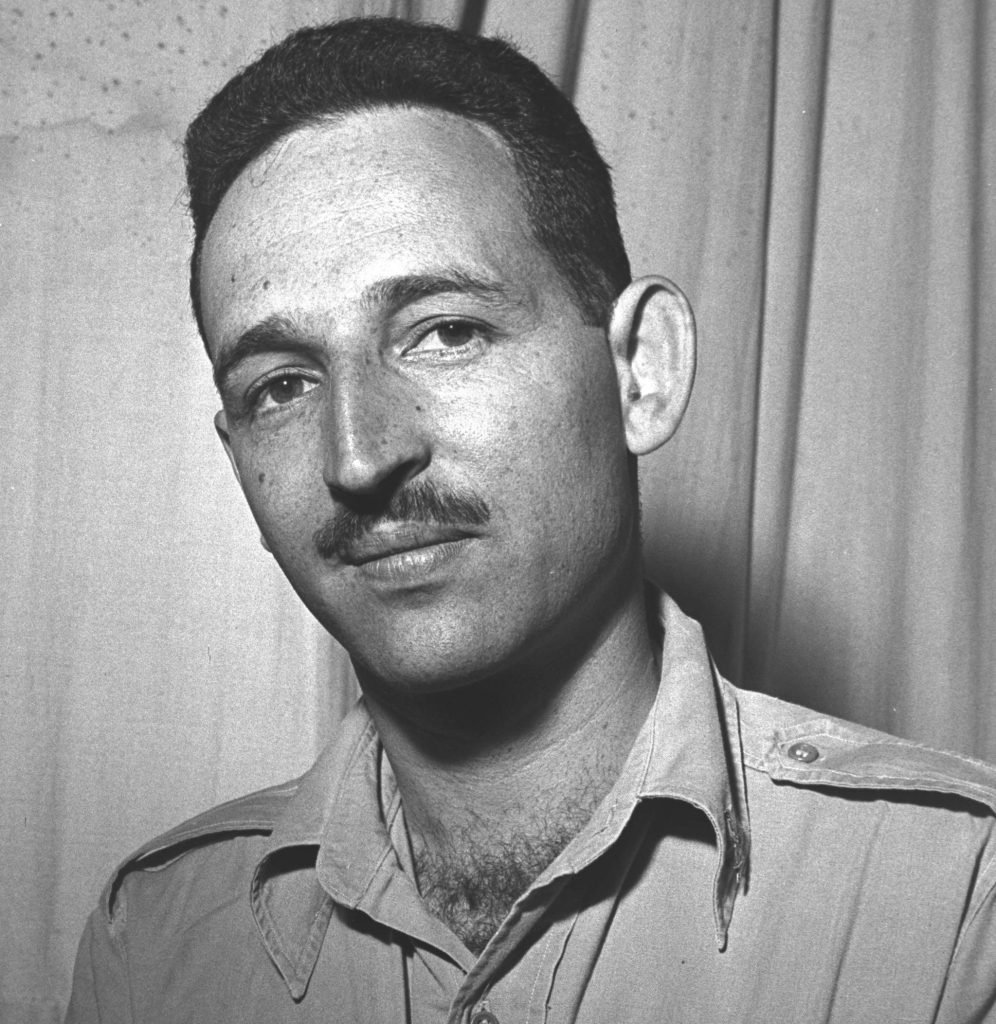
Uziel Gal began his career in arms design in a rather odd way. He escaped the rise of Nazis in Germany by moving to Palestine in 1933. There, he began to develop an interest in firearms.
This interest leads to illegal possession of a firearm and a short stint in prison under British authority. He served three years before being pardoned but made good use of his time in prison to study mechanical engineering.
In 1945, he received a pardon, and after Israel declared its independence in 1948, he went to work designing firearms.

At the time, Israel relied on a hodgepodge of rifles from the British, the Czechs, and even surplus German and American submachine guns and machine guns.
Israel desired their own domestic arms production to ease their dependence on foreign sources. Additionally, arms embargoes were making the acquisition of modern weapons difficult.
Uziel became a member of the Israeli Defense Forces, where he began the design and production of the Uzi.
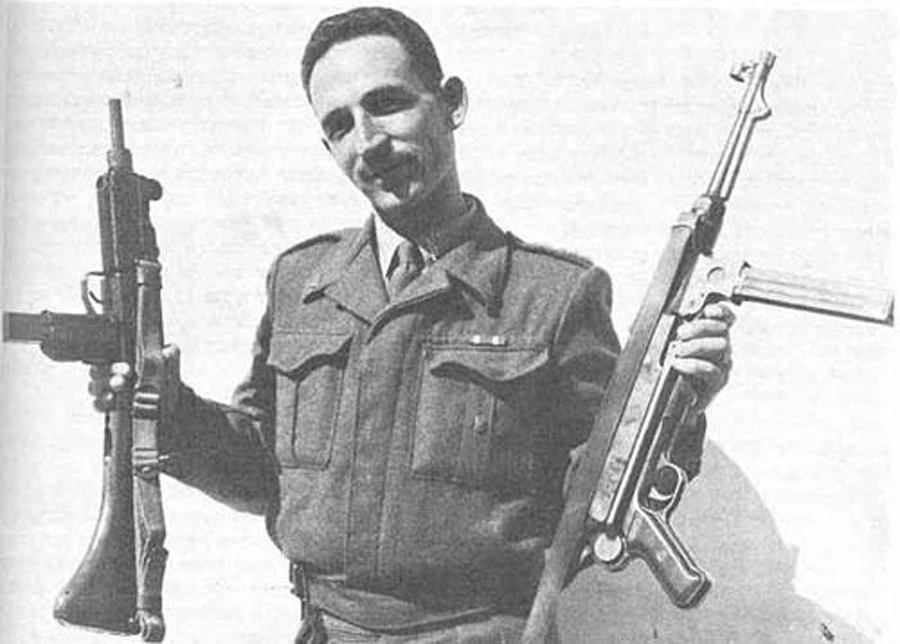
Machine guns at the time were massive, extremely heavy, and not conducive to maneuver warfare, and infantry rifles were also large, heavy, and had slower rates of fire.
Submachine guns allowed an infantryman to provide suppressive fire in a portable package. In close-quarters fighting, these guns excelled.
Israel wasn’t rolling the dough at the time, so they also needed a weapon that could be easily mass-produced, and the Uzi fit that bill. I’ve heard it described as “just a few pieces of metal, one spring, and that’s it.”
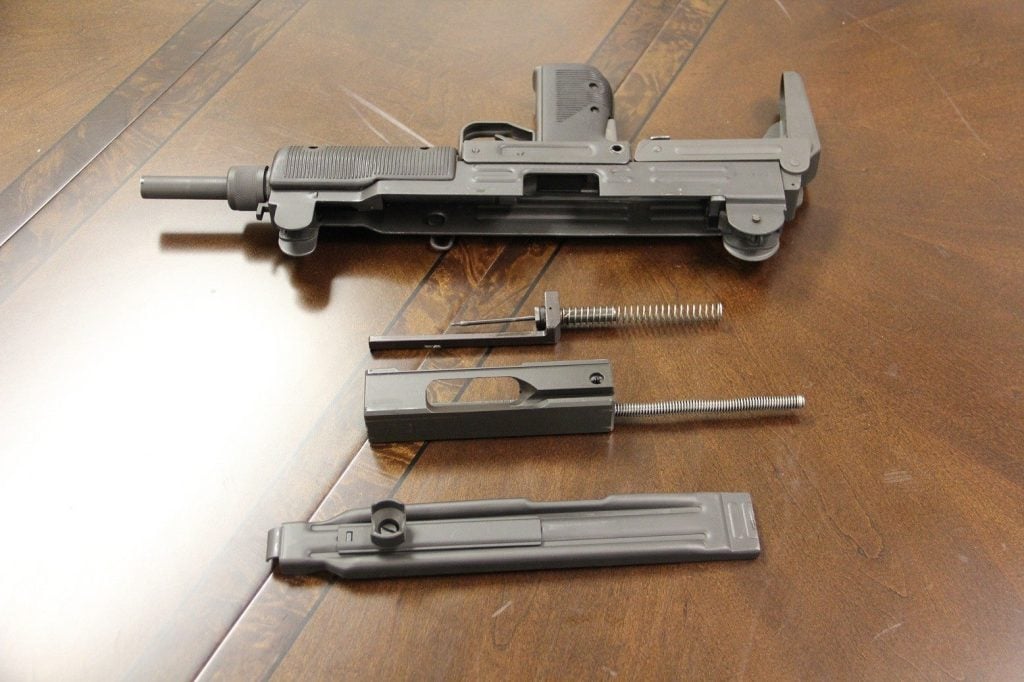
Uziel designed the gun to be simple and robust. Using stamped sheet metal keeps things cheap, and with few moving parts, it doesn’t require special tooling to produce. The simple design was also much more field-friendly.
The Legacy Begins
Uziel presented the weapon to the Israeli Defense Force, and it beat out other designs due to its simplicity and economy of manufacture.
The weapon was officially adopted in 1951 and first fielded by the Israeli special operations forces in 1954.
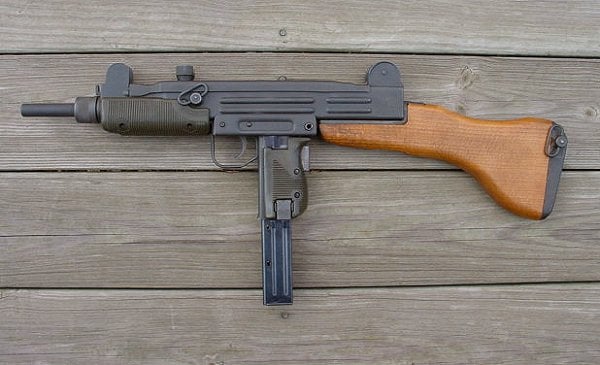
The early variants featured a fixed wooden stock. It was an interesting-looking weapon, but the wood stocks reportedly were very comfortable and robust.
Uzi is a great name; it’s catchy, short, and could create a picture of the gun upon hearing it. However, Uziel pleaded that the weapon not be named after him. The IDF denied his request, and the SMG would bear his name.
The Uzi was not the main infantry weapon of the time. Special Forces and paratroopers carried the weapon due to its compact nature, and it excelled with small teams of commandos who committed sabotage, reconnaissance, and similar special operations.
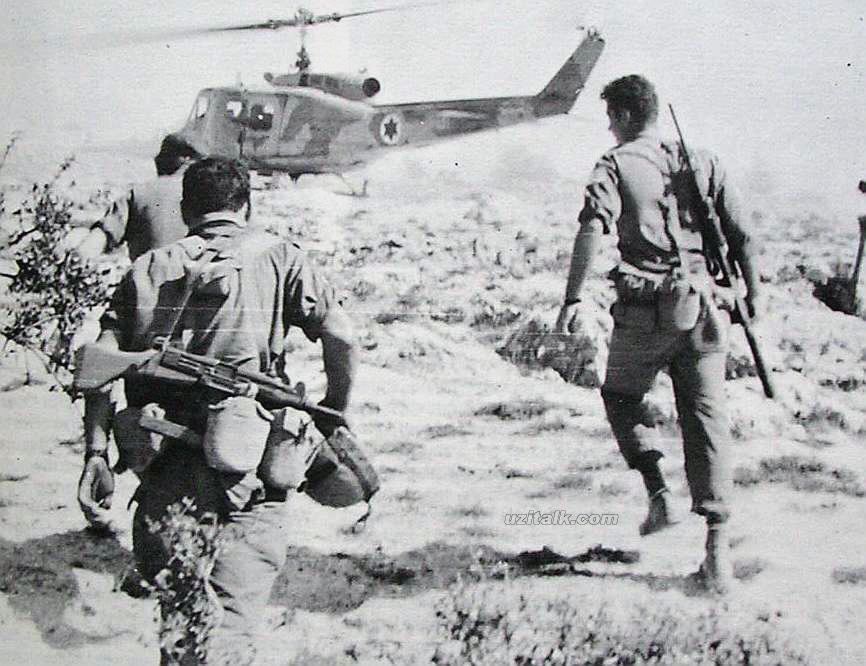
By 1956, the Uzi found its way to the general forces of the Israeli Army. Light infantry found them extremely useful for close-quarters combat. Additionally, mechanized infantry found the short and light weapon quite handy in cramped armored compartments.
1956 also marked the implementation of the famed collapsing metal stock.
The Uzi saw its first taste of combat when the Suez Campaign kicked off in 1956. A good many paratroopers carried Uzis, and the weapon reportedly performed well.
In 1967, the Six-Day War began. This violent conflict saw the Uzi in the hands of elite light infantry forces tasked with clearing bunkers and defensive positions held by Syrians and Jordanians.
Once again, the Uzi saw use in the Yom Kippur War of 1973. However, at this time, Israel had gathered assault rifles like the AK-47, the M16, and CAR-15 to supplement their arsenal, lessening the need for the Uzi.
Counter-Terrorism and the Uzi
Although the acquisition of modern assault rifles reduced the role of the Uzi for conventional infantry operations, the 1980s saw a new world of terrorism begin.
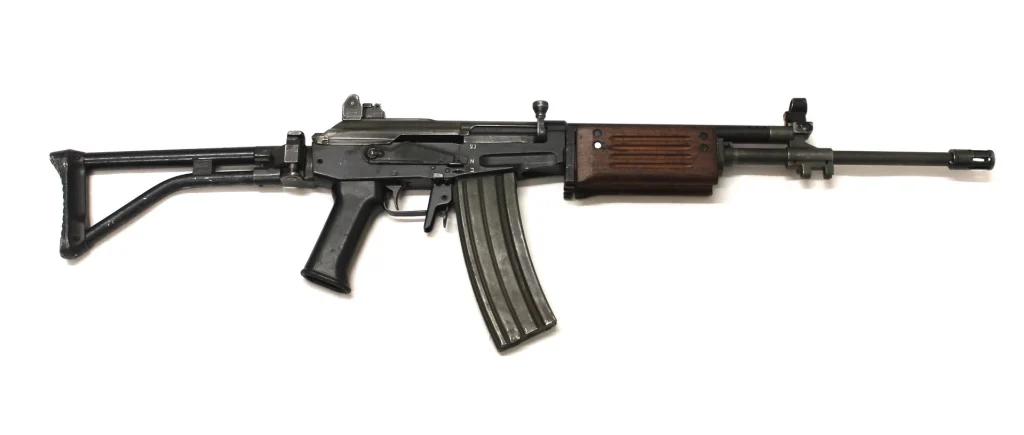
While the M16 and AK series, and eventually the Galil, provided reasonably-sized rifles, they were still somewhat large for counter-terrorism use.
The Uzi was still lighter, shorter, and was better suited for the close-quarters.
In 1976, a group of German and Palestinian terrorists hijacked a flight heading from Tel Aviv to Paris. The plane landed in Uganda, and the Israeli passengers were targeted specifically by the terrorist forces.
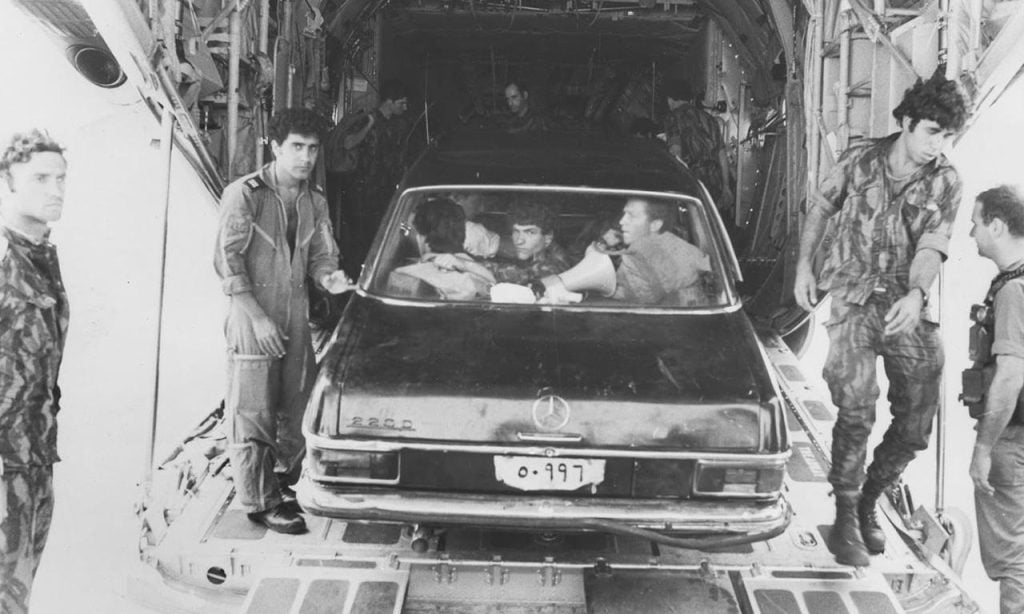
Israeli commandos entered the airport disguised as the Ugandan president, complete with a black Mercedes that matched the president of Uganda’s ride. Operation Thunderbolt was underway.
The commandos armed with Uzis and M16s took the terrorists and Ugandan military down and escaped with the hostages, with the Uzi proving its worth once more.
Worldwide Impact
The Uzi served for decades more. Exports of the firearm were massive, and even the United States was a customer.
Famously, Secret Service agent Robert Wanko pulled one during the attempted assassination of President Reagan.
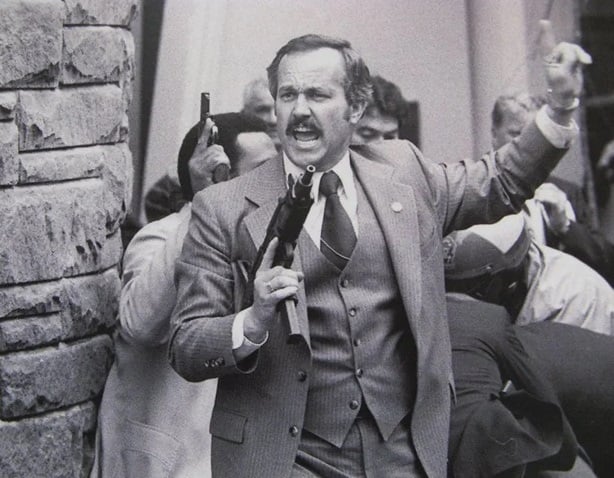
The French Republican Guard took delivery of the Uzi, as did the Queen’s Buckingham Palace Guard and British tank crews. The list of places the Uzi has been used is long, covering everywhere from Greece to Bermuda.
Its ease of use, relatively low price point, and small size made it a favorite of police, counter-terrorism, and elite military forces.
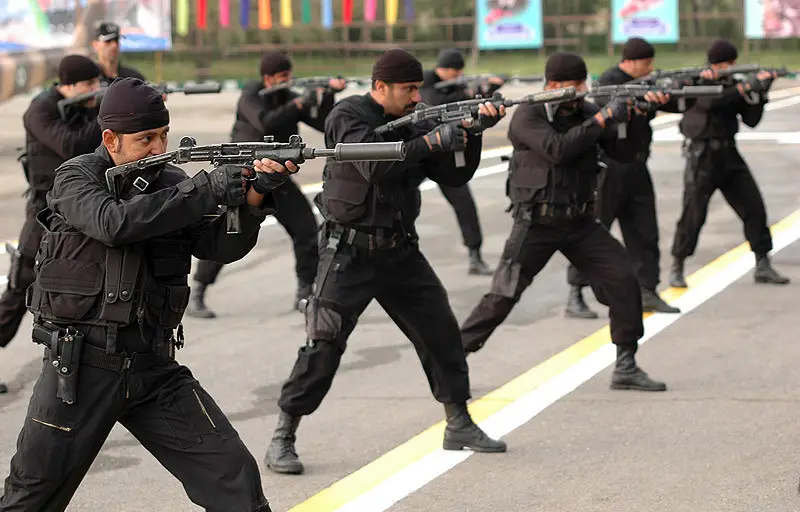
The attractive design drew companies like FN Herstal to produce licensed copies and China to produce unlicensed versions.
Making the Uzi Smaller
To keep sales high and to equip other special operations and police units in Israel, IMI produced the Uzi in various sizes.
In 1980, the Mini Uzi was created, which sports a barrel length of 7.8 inches and a weight of six pounds. The stock folds instead of collapsing and doubles as a foregrip. The smaller gun meant the bolt was shorter, increasing the rate of fire to 950 rounds per minute.
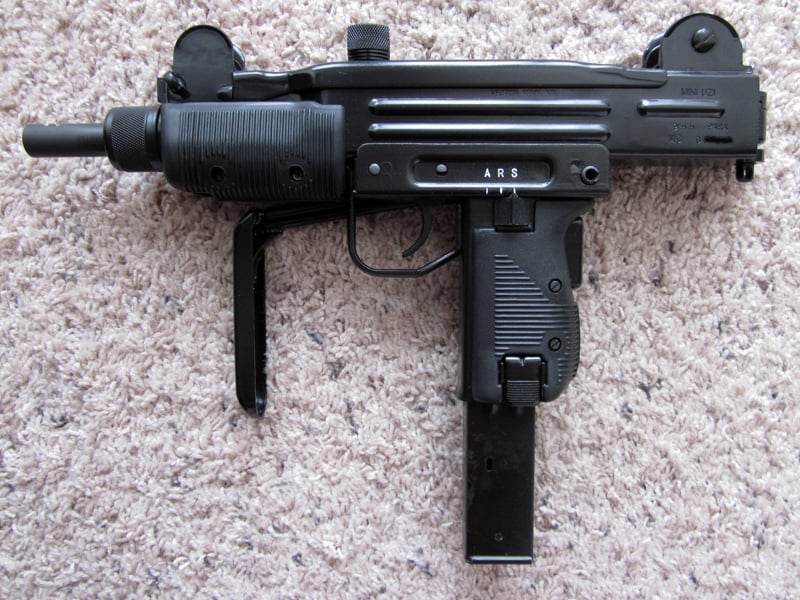
The Uzi was once again downsized in 1986, this time as the Micro Uzi. With a 4.6-inch barrel, it is only 19 inches long with the stock deployed. An even smaller bolt raised the rate of fire to 1,200 rounds per minute.
Additionally, the Micro Uzi utilizes a closed bolt instead of an open bolt and weighs a feathery 3.3 pounds.
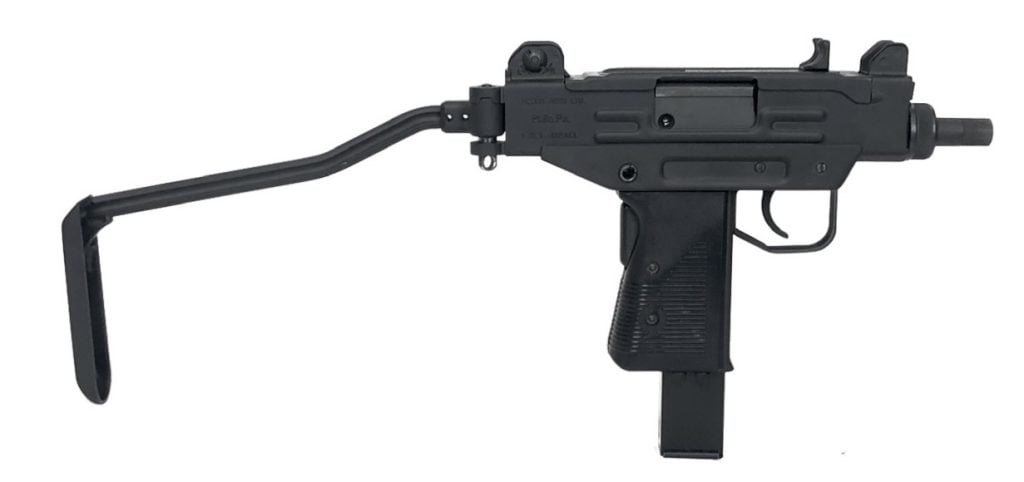
The End of The Era?
In 2003, the Israeli Defense Forces ceased use of the Uzi, replacing it with the Micro Tavor.
Most military and police forces worldwide have also ditched the Uzi. While some have adopted modern SMGs, most countries have gone to short rifle-caliber carbines.
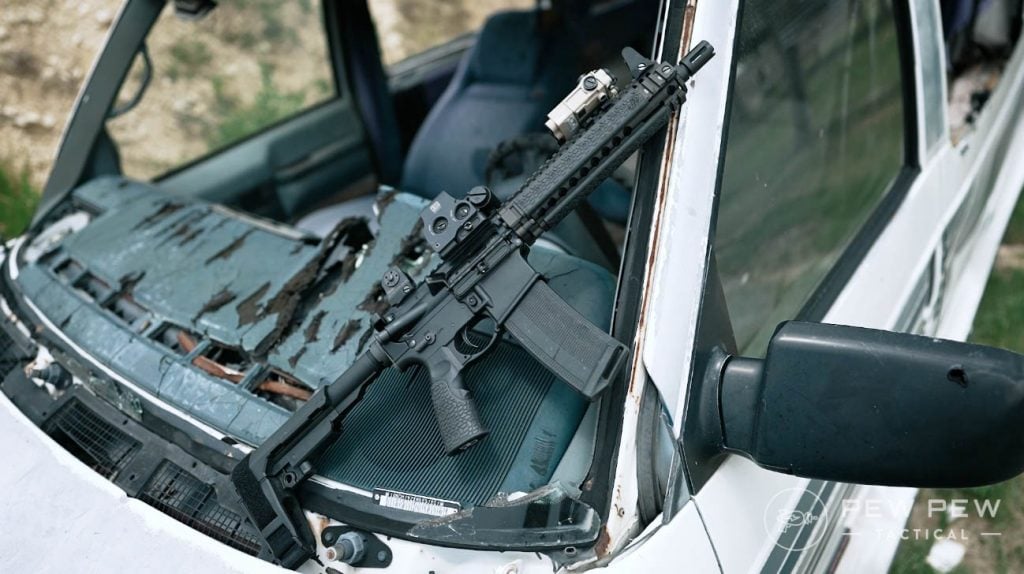
That all being said, the Uzi is still in use by some police and military forces in countries with small defense budgets.
It might lack optics, M-LOK handguards, lights, lasers, and the like, but it’s still an ergonomic, reliable, and easy-to-use weapon when short-range firepower is needed.
The Modern UZI
In 2010, IWI released the Uzi Pro, which is essentially a Micro Uzi gussied up for the modern market.
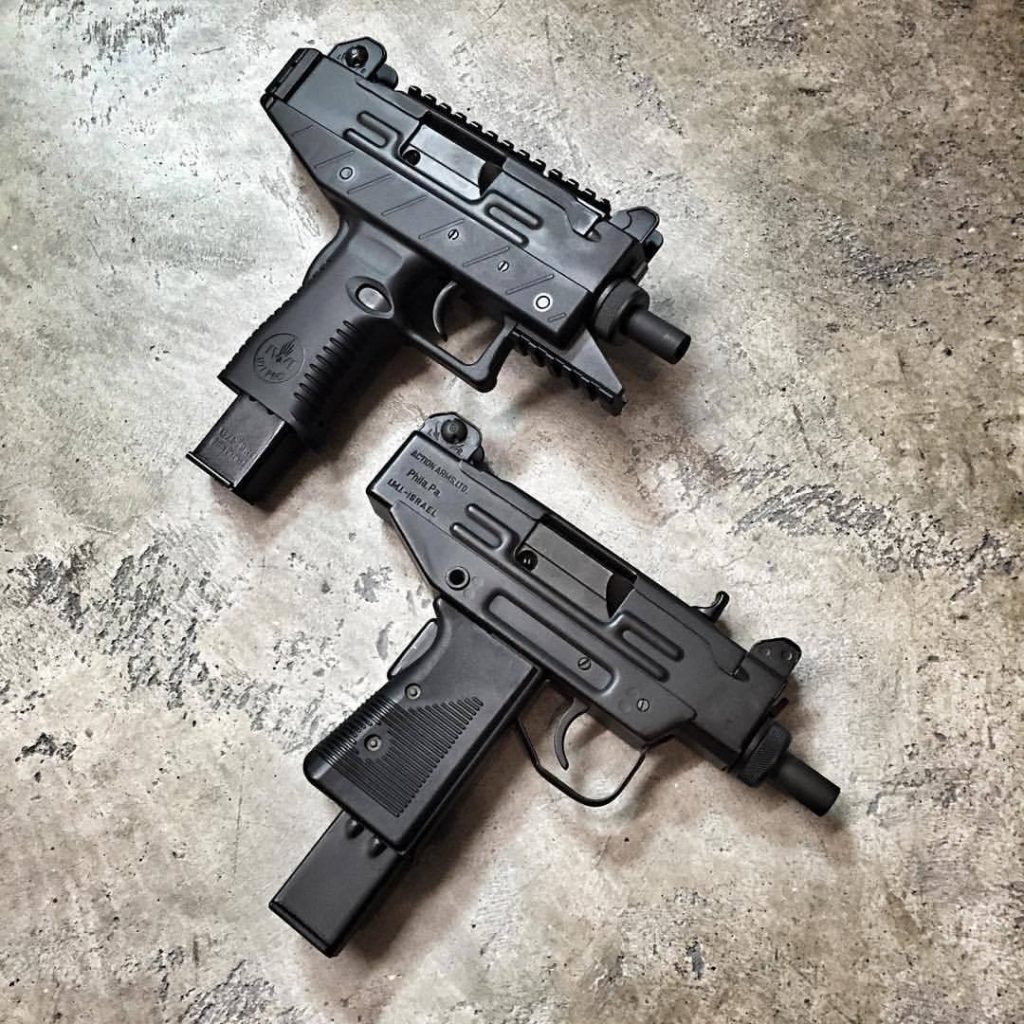
The Uzi Pro is a blowback-operated, select-fire, closed-bolt submachine gun/machine pistol.
The lower portion is larger for two-handed firing with or without a stock and is constructed from polymer. They opted for a more traditional side magazine release over the older heel release.
IWI moved the charging handle to the left side of the gun and added a Picatinny rail along the top for optics.
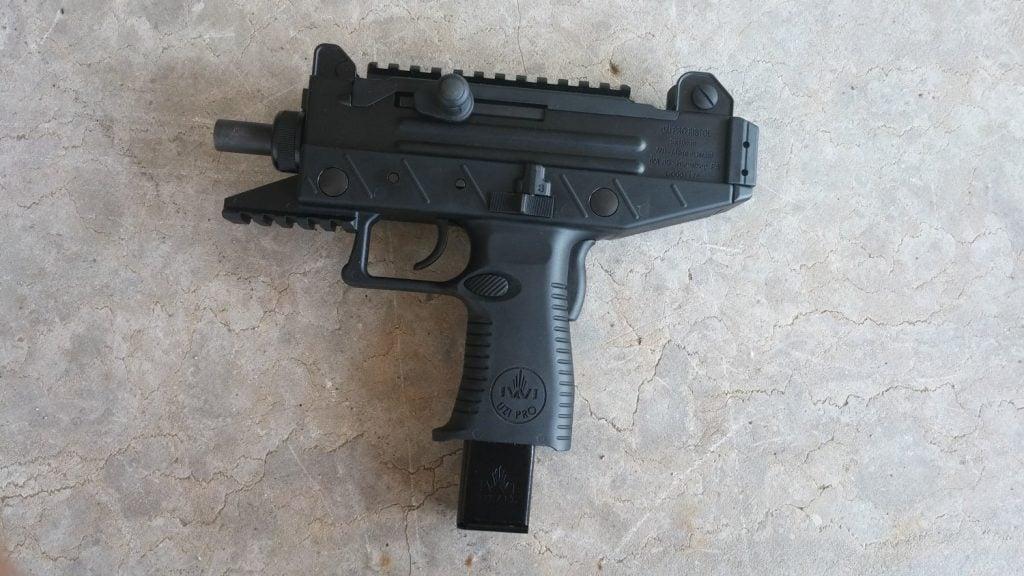
Additionally, IWI added a rail to the bottom of the frame for adding lights, lasers, and other accessories. Military models feature stocks and selective fire, while civilian models are semi-auto and stockless.
Final Thoughts
The Uzi is an iconic symbol on par with things like AK-47, Nike, and Apple.
It’s a fantastic firearm and a piece of small arms history worth noting. Israel has a well-developed small arms program, but the Uzi stands out even to this day.
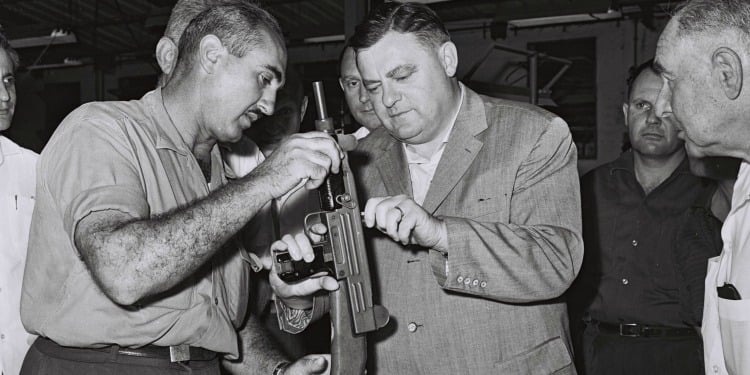
What do you think about the Uzi? Which is your favorite model? Do you have any trigger time on one? Let us know in the comments below! Want to own a piece of history? We got the run-down of some of our favorite retro reproductions!

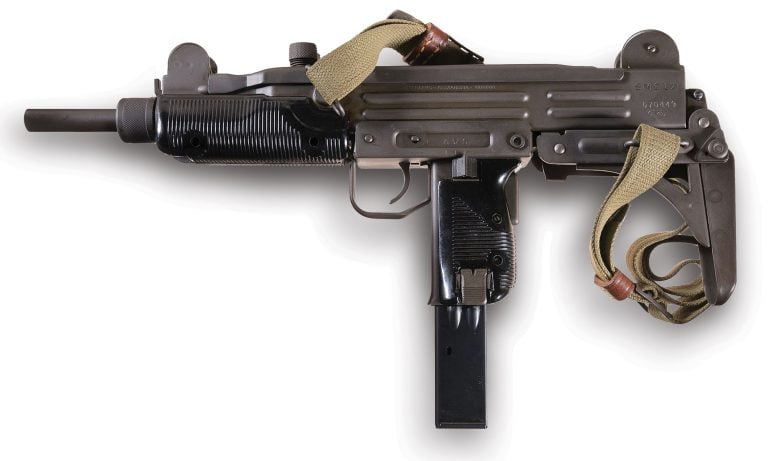
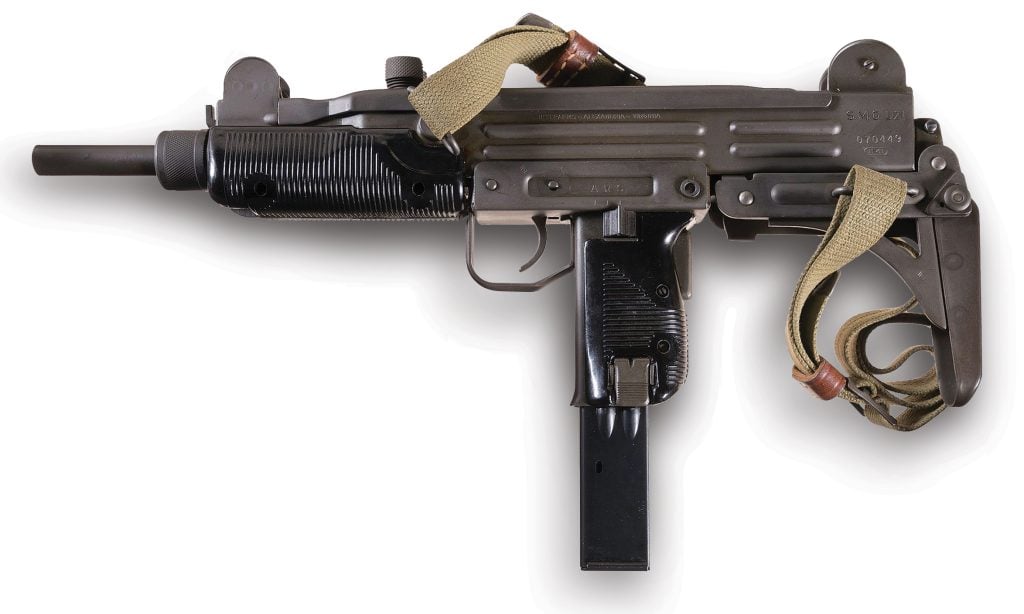
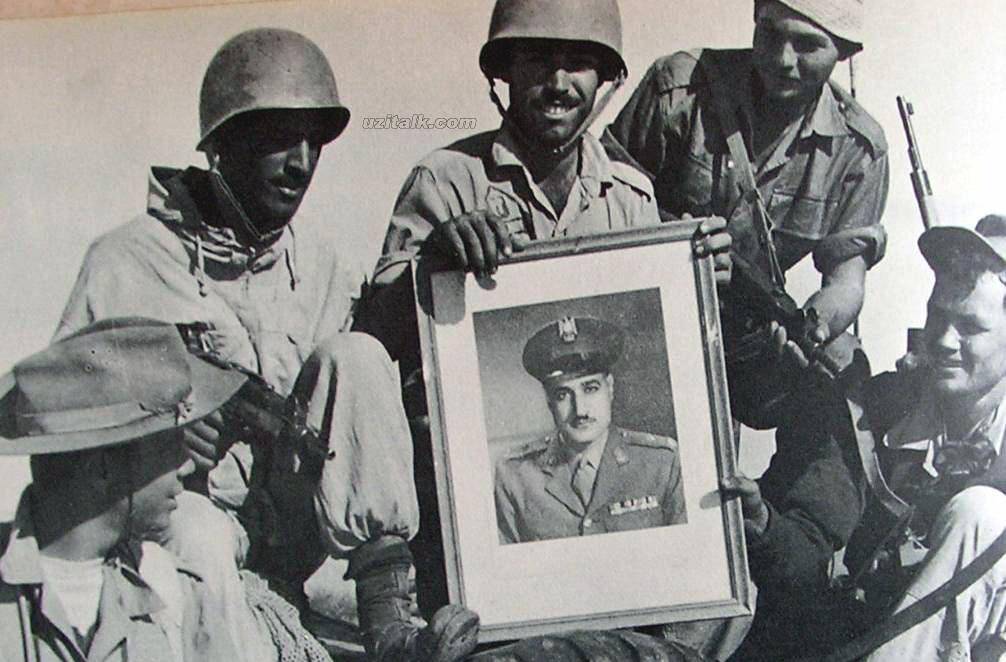
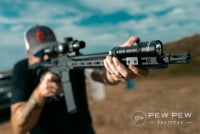



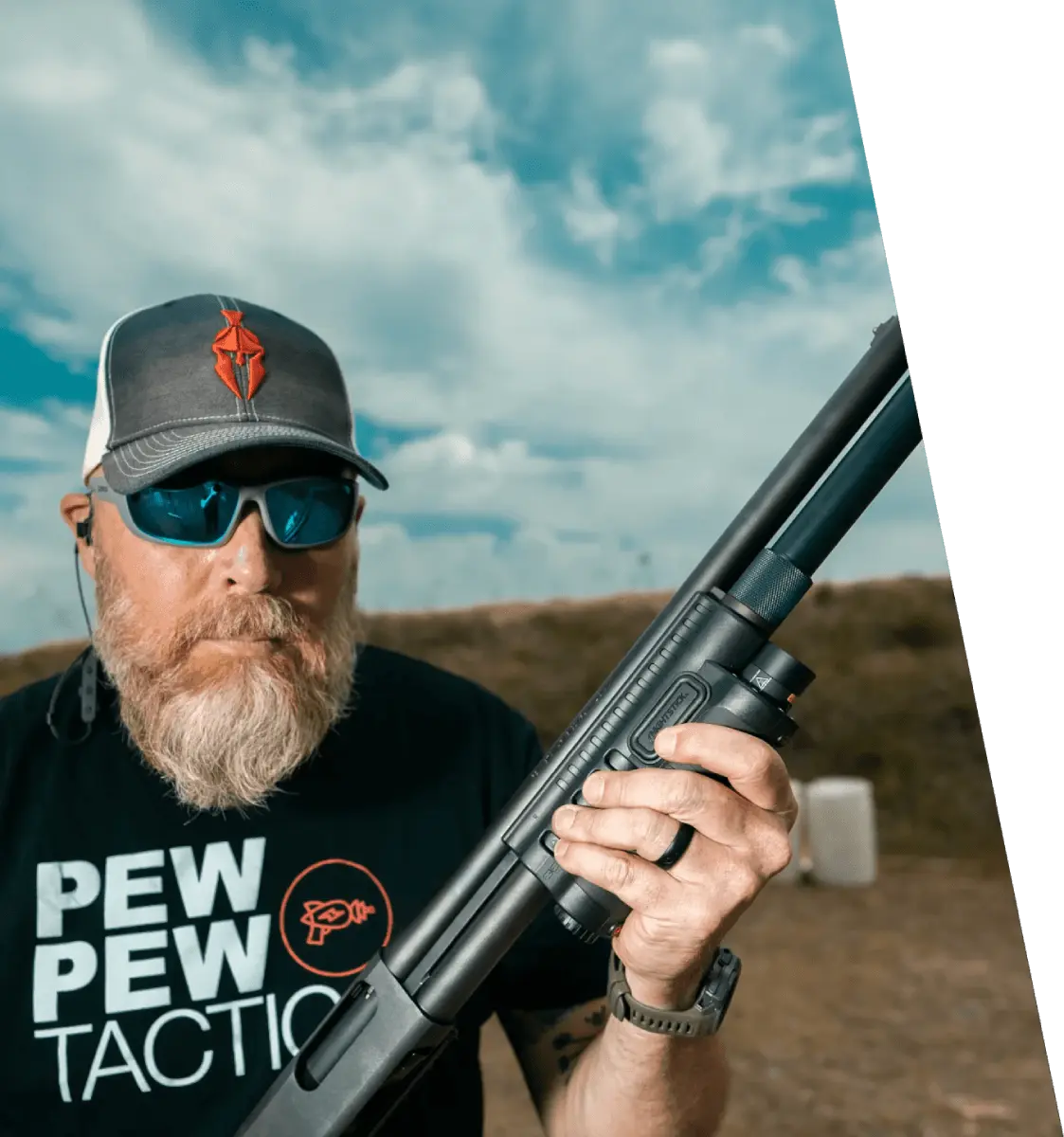

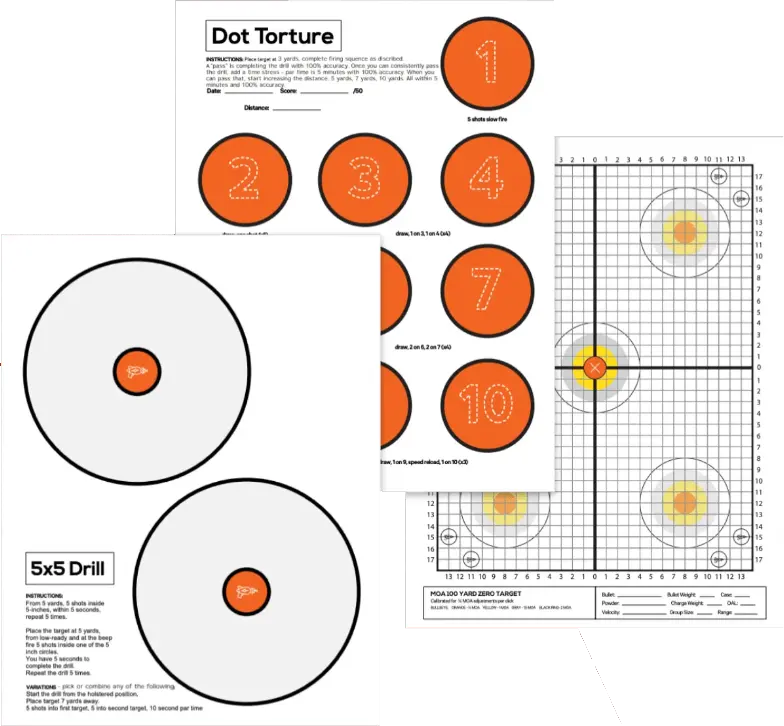
1 Leave a Reply
Iran deploying an IWI made weapon?, oh the irony!